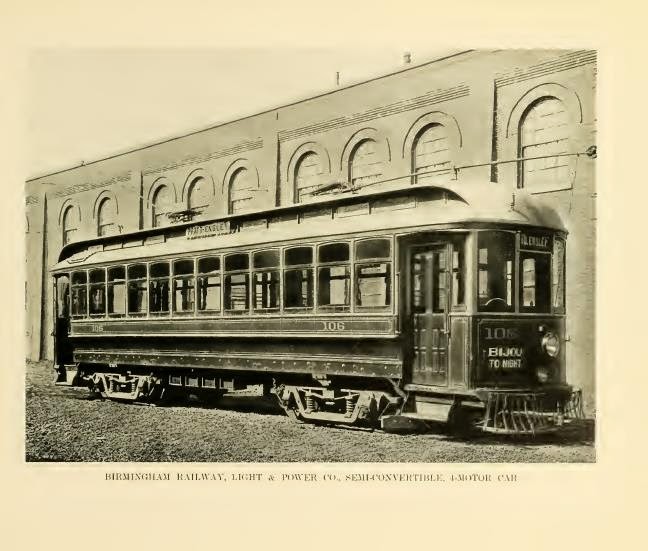For more than a year now my brother Richard and I have been conducting a deep dive into the massive amount of family memorabilia at mom's house in Huntsville. Much of it comes from dad's parents, Rosa Mae and Amos J. Wright, Sr., who lived in the Gadsden. I've previously written about my grandfather's World War I army training at Auburn and the contents of their daughter Beulah Vee's cedar chest.
In a recent round of exploration, we've found a lot of material related to Amos Sr.'s years working for the Louisville & Nashville Railroad. According to an entry in one of Rosa Mae's journals, he began his employment with L&N on May 15, 1923, and retired September 1, 1962.He was a yard foreman for many of those thirty-nine years.
One item we found was the October 1935 issue of the railroad's employee magazine. Inside was an article titled "Six Thousand Attend Birmingham Rally". So what was that all about?
On September 26, 1935, the L & N Railroad held its third in a series of rallies in cities along its rail system. The event took place at the Municipal Auditorium n Birmingham. Both Vice-President T.E. Brooks and President James B. Hill addressed the 6000 employees and family members in attendance. Brooks had served for many years as division superintendent in Birmingham.
The anonymous author noted that the purpose was primarily one of entertainment, but apparently Hill had some extensive remarks before the fun. He noted that the "railroads are almost completely regulated in everything they do" unlike competitive forms of transportation by road, air and water. Plus, almost 7.5% of gross earnings were paid in taxes. Remember that in 1935 the nation was in the depths of the Great Depression.
The article does include a portrait of the L & N Railroad both nationally and in Alabama at that time. President Hill noted in his remarks that L & N operated in 13 states with 26,000 employees, 5000 miles of track, 1000 locomotives, over 50,000 freight cars and more than 700 passenger cars. In Alabama 4700 people worked for L & N, which paid $776,000 in taxes to the state, $350,000 of which went to schools.
So what about that entertainment? "Talented members of the L & N family entertained the large audience with 17 acts that would have done credit to the best vaudeville circuit," wrote the author. Most of them were from Birmingham or Boyles, a community that no longer exists but was the site of L & N's Boyles Yard. Others came from Kentucky. The audience enjoyed a piano trio, tenor solos, a tap dance, and baritone solos. Two male employees "provided many laughs with their blackface act."
Black employees appeared in "Darktown Strutters" accompanied by a pianist. "The finale featured the Southland Colored Ensemble and Quartette, fifty voices directed by Paul Cooper." the author wrote. "This chorus was composed of many colored employes [sic] at Boyles and members of their families. They rendered an enjoyable selection of spirituals and melodies."
I don't know if my grandparents from Gadsden attended this rally, but perhaps they did.
Birmingham's Municipal Auditorium ca. 1937. The facility was later renamed Boutwell Auditorium after Albert Boutwell who was mayor from 1963 until 1967.




























































